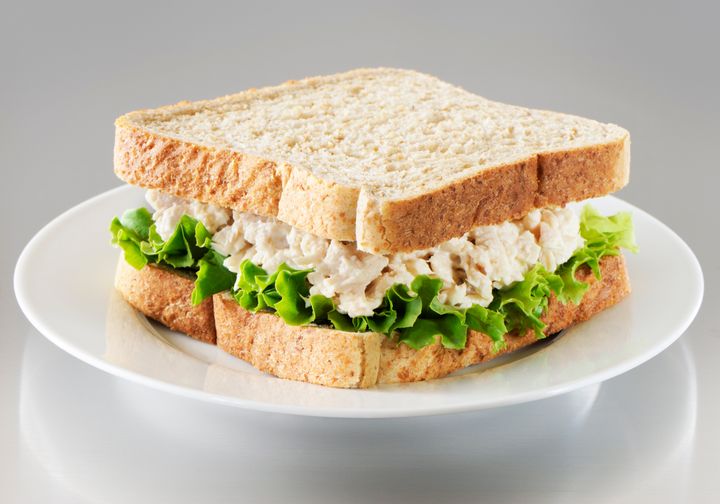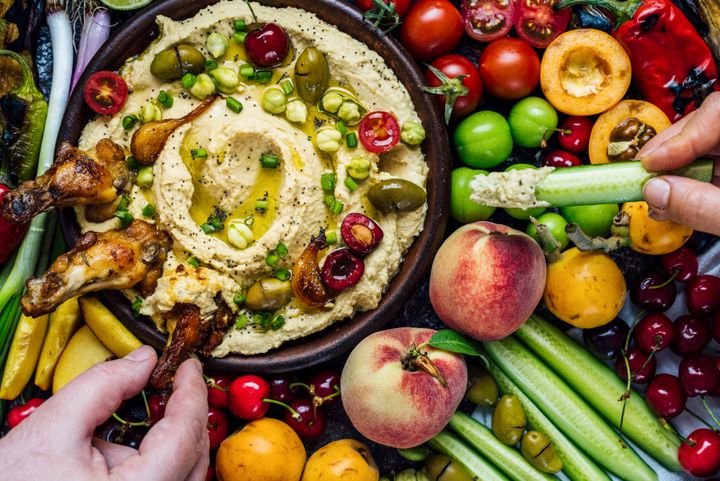Kids are heading back to school, which means it’s time to start packing lunches again. For busy parents, sandwiches are a popular option ― they’re quick to assemble, portable, and it’s easy to up the nutritional content with just a few additions and swaps.
We asked three registered dietitian nutritionists to rank some popular kids’ sandwiches from healthiest to least healthy and to share their recommendations for boosting the nutritional value of each option.
Before we get to the ranking:
“Ideally a sandwich offers some nutritional benefit and physical satiety so that kids are not distracted by hunger while also meeting their nutritional needs with food they enjoy,” Kathryn Riner, a pediatric dietitian and founder of Healthy Kids Nutrition, told HuffPost. “I like to recommend including a source of dietary fiber as well as protein, which can help kids feel satisfied while fueling their learning, activity and growth.”
Rebecca Ditkoff, NYC-based registered dietitian and founder of Nutrition by RD, told HuffPost that a balanced lunch includes three macronutrients: protein, carbohydrates and fat. “Ideally, proteins will be lean options (such as chicken, turkey, eggs or tuna), carbohydrates will come from whole grains (whole wheat bread or pasta, brown rice, quinoa) or starchy veggies (potatoes) and provide fiber (at least 2-3 grams per serving), and fats will come from mainly unsaturated sources (such as avocado, nuts),” Ditkoff said.
Lunch is an important time to incorporate vegetables into a kid’s diet. Meredith Price, a registered dietitian nutritionist and the owner of Priceless Nutrition & Wellness, said to include one or two vegetables in a sandwich to get kids more exposed to them.
“That can even just be lettuce and tomato — it doesn’t have to be fancy,” Price said. “This way you’ll use less of another filling, like a processed meat or cheese, which will reduce sodium and fat content [of a sandwich].” She also recommended using hummus or smashed avocado instead of other condiments and experimenting with plant-based versions of foods your child likes to raise their veggie consumption.
The Ranking
The sandwiches below are ranked according to the three nutritionists’ input. The ranking is based on the sandwich fillings and doesn’t account for personal selections of sliced bread or condiments (mayo, mustard, lettuce, tomato, etc.). Nutritionists were given brand-specific ingredient lists on which they based their findings.
-
Wrap with hummus and vegetables (spinach-and-herb tortilla, classic hummus, sliced vegetables)
-
Tuna salad sandwich (tuna, mayonnaise)
-
Deli chicken breast and cheddar sandwich (deli-sliced rotisserie chicken breast, thin-sliced mild cheddar)
-
Turkey and Swiss sandwich (deli-sliced oven-roasted turkey, thin-sliced Swiss cheese)
-
Peanut butter and jelly sandwich (creamy peanut butter, grape jelly)
-
Ham and American cheese sandwich (deli-smoked ham, American cheese slices)
-
Cheese quesadilla (Mexican-style shredded four-cheese blend, flour tortillas)
Ditkoff noted that the key takeaway here isn’t that one food is healthier than another; it’s about the bigger picture.
“[It’s] the overall eating patterns that really define a person’s well-being,” Ditkoff said. “Sure, some foods have a better nutritional profile than others, but context matters immensely. Tuna may easily win a ‘good’ label, but if all you eat is tuna, this can bring on another problem (excessive mercury). It’s all about balance. One meal or one food doesn’t make a diet ‘healthy’ or ‘unhealthy.’”

And another thing — think twice before labeling any food as “good” or “bad,” as these associations can be particularly problematic for children as they develop their relationship with food.
“There is not one single food that is ‘good’ or ‘bad,’” Riner said. “Looking at all the ingredients [to be ranked], you can find some benefit, whether it is protein, calcium or purely pleasure and satisfaction from taste.”
Why The Ranking Came Out This Way
The hummus wrap topped Price’s list because it was the only option that included vegetables as a main component. “The statistics regarding how many vegetables children eat on a daily basis, especially once they get to high school, is very dismal, so having them eat their veggies with lunch is very important,” Price said.
The plant-based protein was another plus, however, this lunch got points off for the wrap, as the specific wrap we selected contained hydrogenated oil. Price recommends looking for a whole wheat wrap to promote gut health and add fiber content.
Tuna salad was Ditkoff’s top choice (though when making this at home, note the serving size for mayo is just 1 tablespoon ― things can go overboard quickly). “Canned tuna is a good source of essential nutrients, such as omega-3 fatty acids, high-quality protein, selenium and Vitamin D,” Ditkoff said.
To make this sandwich even healthier, Ditkoff recommended adding celery to the tuna salad mix and pairing it with high-fiber whole wheat bread, lettuce and tomatoes. You can also swap the mayo for mashed avocado for a boost of heart-healthy unsaturated fats.
The nutritionists were split on PB&J but agreed that this combo could be improved by using a quality peanut butter with just two ingredients (peanuts and a hint of salt) rather than the traditional PB we chose, and substituting the jelly with fruit to cut out added sugar.

Price ranked the cold cut sandwiches at the bottom of her list due to the processed meats and cheeses, high saturated fat and sodium content, and lack of vegetables. “There’s good evidence that consuming processed meats increases the risk of cancers, so I try to avoid them at all costs for children,” Price said. “However, these types of sandwiches are easy, quick and usually affordable, so I totally understand why parents offer them.”
Price recommended replacing cold cuts with a veggie slice like Tofurky and including a vegetable in the sandwich or on the side. Ditkoff found the less processed cheese in the deli chicken breast and turkey sandwiches to be a redeeming quality.
The cheese quesadilla ranked low on the nutritionists’ lists for its high sodium and saturated fat content and lack of filling fiber and protein. To make it healthier, Ditkoff recommended serving the quesadilla with a small side of guacamole and filling it with chicken and vegetables like tomatoes, peppers and mushrooms.
Whatever you decide to pack in your kids’ lunch, the key is to find balance and variety while promoting your child’s positive relationship with food.
“The most important thing to consider when packing a school lunch is to make sure there is a lot of variety in your child’s meals day to day, incorporating different foods into their diet while also keeping mealtime fun and enjoyable,” Riner said.
